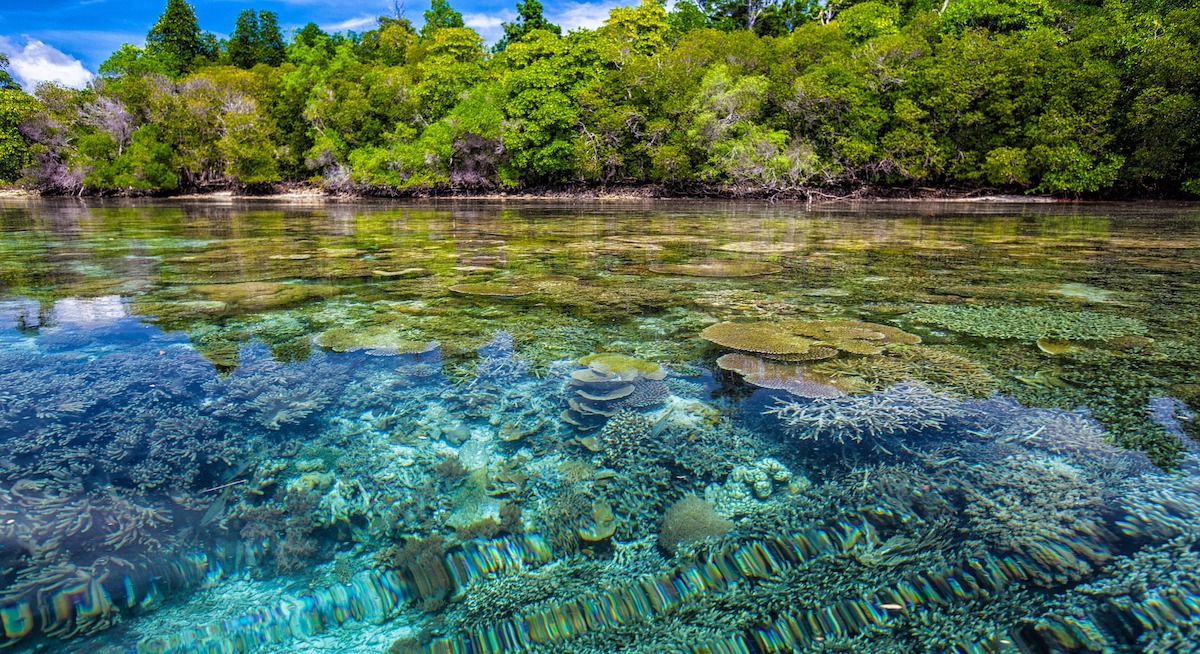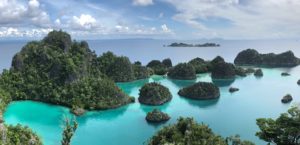
A Griffith-led study has developed a model to predict the success of Marine Protected Areas (MPAs) based on historical fishing pressure and environmental conditions like wave exposure and distance to coastal habitats.
The study, published in , modelled the biomass of fish at 57 sites inside MPAs in Raja Ampat, Indonesia and used the model to predict the recovery of marine protection zones.

“Picture an ocean alive with fish and clear blue seas as far as the eye can see, that’s Raja Ampat,” said , a PhD graduate from the .
“Part of one of the largest MPA networks in the tropics, it’s a divers paradise located at the epicentre of the coral triangle; an area in the western Pacific Ocean that includes Indonesia, Malaysia, the Philippines, Papua New Guinea, Timor Leste and Solomon Islands.
“Named for its staggering number of corals (nearly 600 different species of reef-building corals alone), the Coral Triangle supports over 120 million people who rely on its coral reefs for food, income and protection from storms.”
With the biodiversity of the reef under pressure from various types of fishing, MPAs can be an important management tool to protect biodiversity and ensure the sustainability of fisheries, especially in Indonesia with limited fisheries management. However, despite expectations, not all MPAs increase the number and size of fish overtime.
“If fish stocks don’t improve in MPAs, it can have detrimental consequences for the community acceptance needed for long-term survival of protection zones’, said Awaludinnoer Ahmad, a researcher at Yayasan Konservasi Alam Nusantara affiliated with The Nature Conservancy, who is part of the Raja Ampat Monitoring team.

The studies’ co-author , an ARC Future Fellow at and the , notes that “it’s key we set achievable targets for fish stocks inside MPAs.”
“The performance of Marine Protection Areas must be tracked so that managers can be aware of poaching or other threats that may impact on its success and benefits.”

However, all protection areas aren’t created equal. Its location, environmental conditions and how degraded the area was prior to the creation of the MPA all influence its potential success.
“At the creation of marine protection areas, the level of fishing within an area before it became an MPA is often not considered when setting objectives for the protection zone,” Dr Griffith points out.
“The method we developed using spatial modelling of fish biomass takes into account the level of fishing pressure prior to MPA establishment, to get a clearer understanding of exactly how MPAs are reaching conservation goals.
“We found that fish were improving inside some MPAs, but there was a lot of variation across the seascape.”
Their study showed that more fish were found inside no-take zones in areas closer to coastal habitats and patrol posts, in areas with greater waves and in areas further from populated villages.
However, some MPAs in remote with very little fishing pressure already had large numbers of fish before they were established, so goals of increased fish biomass for areas like this are unrealistic.
“Our research suggests that in southern Raja Ampat overall fish levels are recovering well and meeting the MPAs goals, but there are key areas where fish are not recovering, contrary to expectations,” Dr Griffiths said.
“These areas should be the focus of more research and warrant further investigation of management, for example assessing poaching as a potential cause of poor recovery trends.”
“Crucially, our research highlights the importance of linking historical and current fishing pressure with environmental conditions to understand how fish recover inside MPAs overtime.”







